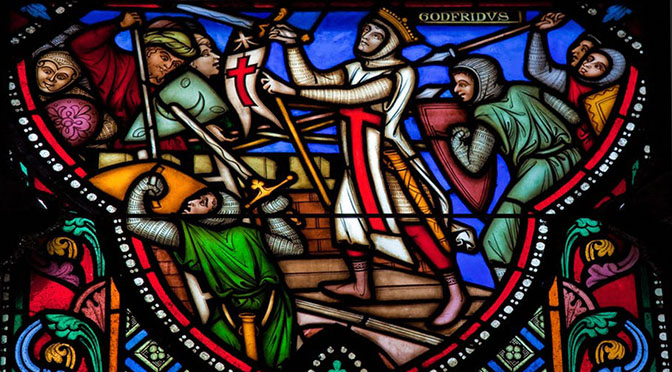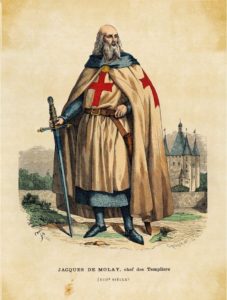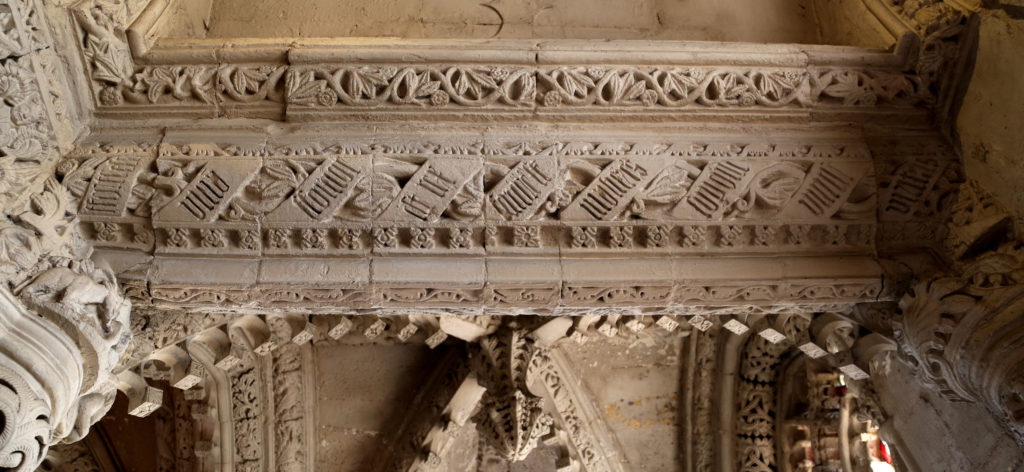The Knights Templar, or to give them their full title, The Poor Fellow-Soldiers of Christ and of the Temple of Solomon, were a military monastic order founded in 1120 by the French nobleman, Sir Hugues de Payens, ostensibly to protect Christian pilgrims on their journey to Jerusalem.
The Order flourished during the 12th and 13th centuries, spreading across Western Europe and The British Isles, where they established Templar houses at various key locations, including at Balantradoch in Midlothian, close by Rosslyn, on a substantial portion of land granted to Sir Hugues de Payens by King David I of Scotland in 1128.
The Knights Templar Order commanded great wealth and power for almost two centuries. Throughout these years, they received massive donations of money, manors, churches, even villages and the revenues thereof, from Kings and European nobles interested in helping with the fight for the Holy Land. The Templars, by order of the Pope, were exempt from all taxes, tolls and tithes, their houses and churches were given the right to asylum and were exempt from feudal obligations. They were answerable only to the Pope. The Templars’ political connections and awareness of the essentially urban and commercial nature of the Holy Land naturally led the Order to a position of significant power!
French Connection
On Friday 13th October 1307, King Philip IV of France (a.k.a. Philippe le Bel) -deeply in dept to the Order who had helped fund his wars against England- instigated the eventual demise of the Knights Templar. He ordered the arrest of the Order’s grand master, Jacques de Molay, and the mass arrest of scores of other Templars. Many of the members were tried for heresy by the Inquisition, tortured and burned at the stake for sexual misconduct and alleged initiation ceremonies. Historians would say either it was greed that drove King Philip IV, the quest for all the money and goods the Templars had accumulated in the previous two centuries; or a product of his fanatical catholic beliefs, his conviction that the Templars had become heretical, given to lascivious and dissolute practices involving homosexual sex, partying, and a luxurious life style.
Meanwhile in the British Isles…
King Edward II of England, initially reluctant to act against the Templars, ordered their arrests following pressure from Pope Clement and King Philip IV of France, on 20 December 1307. Only handfuls of Templars were taken into custody. However, the trials did not commence until 22 October 1309, lasting until June 1310. Unlike the trial in France, where the Templars were tortured into confessing to unspeakable activities, in the British Isles there were no burnings and only three confessions after torture. Several Templars went missing, most of whom later reappeared.
Two Templar brothers at Balantradoch, near Rosslyn, were arrested and brought to trail. They were the Englishmen Walter de Clifton and William de Middleton. The trial was presided over by William Lamberton Bishop of St Andrews, and Master John of Solerius, a papal clerk.
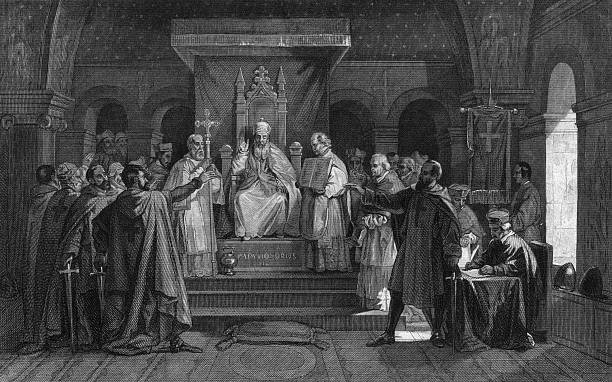
The first group of witnesses were various Franciscan and Dominican friars, as well as the abbots and several monks from Newbattle, Dunfermline and Holyrood Abbey. In all there were 25 men from this category, the first to give evidence being Lord Hugo, the Abbot of Dunfermline, who had nothing essentially condemnatory to say about the Templars. The subsequent clerical witnesses all concurred with this testimony.
Then followed a parade of lay witnesses, the first being Sir Henry Sinclair of Rosslyn. In his statement he said that ‘he had seen the commander of the Temple on his deathbed, receiving the Eucharist very devoutly, so far as onlookers could judge’. His neighbour Hugh of Rydale also gave favourable testimony, as did Fergus Marischal and William Bisset.
It is important to note that in medieval hearings the inquisitors really had only two types of evidence they could use to convict: confessions, or the corroborating testimony of two witnesses.
What is very clear in this case is that the papal inquisitor could not find two men to speak against the Templars, and that each witness corroborated and supported the statement of all the others to some degree. In view of the fact that King Edward II had never even wanted to bring charges, it seems fair to say that this was very much a show trial. It could be justly said to both the Pope and King Philip IV of France that an inquisition had taken place, and that no verdict against them could be made from the evidence given.
![]()
Asking for an Official Apology
According to The Times article “The Last Crusade of the Templars” by Ruth Gledhill published on 29 November 2004, one modern group in Hertfordshire claims that although the medieval order officially ceased to exist in the early 14th century, that the majority of the organisation survived underground. The article states that the group has written to the Vatican, asking for an official apology for the medieval persecution of the Templars. In Rome in 2004, a Vatican spokesman said that the demand for an apology would be given “serious consideration”. However, Vatican insiders said that Pope John Paul II, 84 at the time, was under pressure from conservative cardinals to “stop saying sorry” for the errors of the past, after a series of papal apologies for the Crusades, the Inquisition, Christian anti-Semitism and the persecution of scientists and “heretics” such as Galileo.
![]()
700-year-old Vatican records
3 years later, on 25 October 2007, Vatican officials have presented Secret Vatican City archive documents detailing the heresy trials of the Knights Templar are to be sold for the first time. ‘Trial Against the Templars’, an expensive limited edition of the proceedings of the 1307-1312 papal trial of the mysterious medieval crusading order of warrior-monks who were accused of heresy, tells in mediaeval Latin how the legendary Crusader Knights were tried for heresy by the Inquisition and found not guilty.
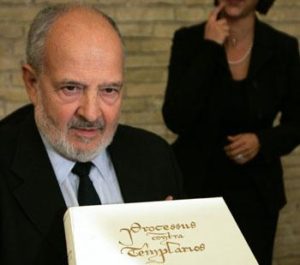
Presenting the new volume in the old Synod Hall in the Vatican, officials stressed the historical significance of the volume and made clear there are no new documents. The Prefect of the Vatican’s Secret Archive, Monsignor Sergio Pagano, said there are no discoveries, all the documents were already known. The original artifact, he said, was discovered in the Vatican’s secret archives in 2001 after it had been improperly catalogued for more than 300 years!
An Italian paleographer at the Vatican Secret Archives, Barbara Frale, said that the documents allow for a better interpretation of the trial. She said the parchment shows that Pope Clement V initially absolved the Templar leaders of heresy, but pressured by French King Philip IV he later reversed his decision and suppressed the order.
![]()
Only human, after all…
All boundaries, whether national or religious, are man made. So were the decisions of French inquisitors, who seems to have been more of a witch hunt than an actual trial.
Through building his architectural masterpiece, Rosslyn Chapel, Earl William St. Clair was certainly writing a story in stone, and yet there is only one quotation inscribed in the whole building. It is on one of the lintels in the South aisle. It reads:
“Forte est vinu, fortior est Rex, fortiores sunt mulieres, sup om vincit veritas”
“Wine is strong, a king is stronger, women are stronger still, but truth conquers all.”
References:
![]() Gerald Sinclair and Rondo B B Me, “The Enigmatic Sinclairs Vol.1: A Definitive Guide to the Sinclairs in Scotland”, St. Clair Publications (2015)
Gerald Sinclair and Rondo B B Me, “The Enigmatic Sinclairs Vol.1: A Definitive Guide to the Sinclairs in Scotland”, St. Clair Publications (2015)
![]() C. G. Addison, “The Knights Templar And The Temple Church”, Kessinger Publishing (2007), p.488
C. G. Addison, “The Knights Templar And The Temple Church”, Kessinger Publishing (2007), p.488
![]() H. J. Nicholson, “The Knights Templar on Trial: The trials of the Templars in the British Isles”, 1308-11, New York: The History Press (2011), p.238-239
H. J. Nicholson, “The Knights Templar on Trial: The trials of the Templars in the British Isles”, 1308-11, New York: The History Press (2011), p.238-239
![]() Helen J. Nicholson, “The Knights Templar on Trial”, The History Press (2011)
Helen J. Nicholson, “The Knights Templar on Trial”, The History Press (2011)
![]() Barbara Frale, “The Templars: The Secret History Revealed”, Arcade Publishing (2011)
Barbara Frale, “The Templars: The Secret History Revealed”, Arcade Publishing (2011)
![]() Michael Haag, “The Tragedy of the Templars”, Profile Books Limited (2014)
Michael Haag, “The Tragedy of the Templars”, Profile Books Limited (2014)
![]() Ruth Gledhill, “The Last Crusade of the Templars” , The Times, (November 29, 2004)
Ruth Gledhill, “The Last Crusade of the Templars” , The Times, (November 29, 2004)
![]() Niven Sinclair, “Wine, Woman and the Truth”, (June 10, 2004)
Niven Sinclair, “Wine, Woman and the Truth”, (June 10, 2004)
![]() Grigor Fedan, “Knights Templar History”
Grigor Fedan, “Knights Templar History”
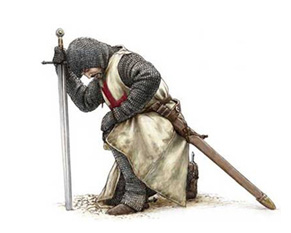 “Non Nobis, Domine, non nobis, sed Nomini Tuo da gloriam.”
“Non Nobis, Domine, non nobis, sed Nomini Tuo da gloriam.”
(Psalm 115:1)
